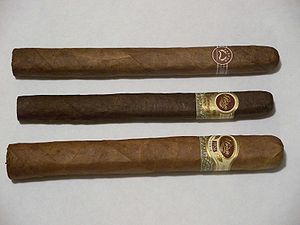Piloto Cigars Inc.
With what little money they had, the Padrón family bought a small farm in the Pinar del Río region of Cuba, Las Obas.
Jose Orlando Padrón was born in 1926 in Cuba and grew up near the Pinar del Río region, famed for its tobacco.
Padrón produced 200 cigars a day, made in typical Cuban rolling style, with one torcedor.
Jose Padrón began using the Nicaraguan tobacco in 1967, but due to inability to meet the demands of his consumers, he moved his company to Estelí, Nicaragua in 1970 — a country with numerous political troubles at the time.
A new problem arose for Padrón after making peace with the Sandinistas: the United States embargo against Nicaragua enacted by President Ronald Reagan on Nicaraguan products.
Padrón scrambled to move as much tobacco and cigars from Nicaragua to Tampa, Florida during the 5 days allotted before the blockade took effect.
He was later granted an extension by the U.S. government to continue to move his product for another 6 months, then, whatever stock he had left in Nicaragua, remained there.
[6] The new rolling center was the 17th building owned by Padrón in Estelí and brought the company's usable space in the city up to a total of 75,000 square feet (7,000 m2), mostly dedicated to the storage of tobacco.
[3] Consisting of 7 vitolas, each cigar features either a sun-grown habano natural or Maduro wrapper, and contains Nicaraguan tobacco aged for no less than five years.
Consisting of 6 unique blends, each cigar features either a sun-grown habano natural or Maduro wrapper, and contains Nicaraguan tobacco aged for a minimum of ten years.
Padrón has received numerous awards and high ratings from many respected cigar critics, connoisseurs and aficionados.
The Padrón 1964 Anniversary blend has received sixty two ratings, the lowest being a 90 and the highest being a 95 on a one hundred point scale.
